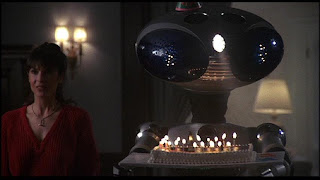 (Note: Potential spoilers, depending on your definition.)
(Note: Potential spoilers, depending on your definition.)Last week, I went to see The Curious Case of Benjamin Button on its opening night. As much as I love film, this was a rarity for me. My excitement stemmed from very hazy memories of enjoying the original F. Scott Fitzgerald story, which I read while in high school. The film version, directed by David Fincher, was very well made, and I was tempted to take the film at face value. However, my curiosity got the better of me--I decided to go online and re-read the original source. Now, with the story fresh in my head, I'm torn between my enjoyment of the film and my (possibly ill-founded?) annoyance at the major deviations between the story and the adaptation.
Naturally, it's understood that every adaptation cannot be one hundred percent faithful to a book or story, and this was a necessity in the case (no pun) of Benjamin Button. Fincher and screenwriters Eric Roth and Robin Swicord had to stretch a few pages into a feature-length film. For the most part, the basic themes are the same--how would someone react, adapt, and live life knowing that he/she is aging in reverse? While this question might seem more philosophical than anything, the story and the film progress naturally. Benjamin has no choice but to accept his fate, and the curious assumption is that middle-age is best, no matter which direction you're heading.
The differences between the story and film are equal parts inspired and unneccessary. The film is set in New Orleans as opposed to Baltimore, with continuous flash-forwards to the present deathbed of Benjamin's love, Daisy (originally Hildegarde, played by Cate Blanchett). This simple name change is puzzling. Is Daisy sexier than Hildegarde? Is it a cheapened homage to The Great Gatsby? In the story, Benjamin falls out of love as he grows "younger," with Hildegarde aging naturally. In the film, they do grow apart, only to be reconnected years later. The setting change also provides a needless backstory of Hurricane Katrina, which gets closer in the present film narrative as Benjamin's story advances. In my mind, this provides no additions to the story, not even a metaphorical one. However, partly related to the setting, the film does boast excellent castings of black actors playing black citizens. Yes, it's a very rose-colored look at 1920s Southern life, and yes, Benjamin's adoptive mother (the wonderful Taraji P. Henson) is more or less a servant. However, the film makes use of black actors and extras because they're people, and not because the script or scenes call for black actors. This is a small step in the direction that people like Spike Lee have been arguing for for years.
I could go on with more potential criticisms of the film/story differences, but I'd like to close with some praises. The production design by Donald Graham Burt is stunning, especially combined with the cinematography by Claudio Miranda. The early scenes feels like old photographs, with dimmed hues and lots of faded brown and beige backgrounds (these descriptions would be much better with DVD screencaps). The overall atmosphere "clears up," so to speak, as the decades advance. In one of the best examples, the 1960s scenes have a definite 1960s film cinematography feel. Also, it's always great to applaud the work of Brad Pitt. While this isn't close to being his best acting effort, I still feel that he's grossly underrated as an actor, since most of the focus seems to be on his personal life. Looking past the makeup and special effects, he does an engrossing job with what he has...that is, he does his best to incorporate the emotions of his various ages without going over the top. It's a nod to his versatility that he can show excellent range where there's the potential to have none.

















































